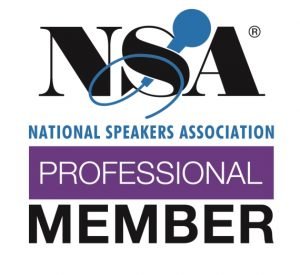In my early years as an Air Force aircraft mechanic, I quickly learned that the rest of the world existed solely to support us maintainers. Unfortunately, because the world is not always as it should be, not everyone else understood this fact that seemed so obvious. If I needed a piece of equipment, it should appear instantly, if not sooner. If I needed a part to fix an airplane, it should appear instantly, if not sooner. If I needed some other type of support it should appear…well you get the point.
I also developed the attitude that the people in all those support functions were somehow less important. After all, they weren’t aircraft mechanics.
They Have Skills Too
As the years went by I moved to supervisory positions and found myself interacting with those support teams on a different level. I found that they were smart people, dedicated to their specialty and proud of their skills. In fact, they had skills I wasn’t even aware of.
As the supervisor of a large maintenance organization, I was responsible for many different specialties including the Aerospace Ground Equipment (AGE) shop. The relationship between AGE and other maintainers is usually strained at best and this was the first time I had worked closely enough with them to understand what they really did. I was amazed to learn that they had a wide range of skills and were often just as stressed to meet difficult demands as the rest of us.
That opened my eyes to another realization that is critical to good leadership.
Mission, Mission, Mission
While one team may support another, the more important point is that everyone supports a broader mission than just their own. Good team leaders must have a clear understanding of not only how their team contributes to mission success, but also how their team can best interact with the other teams they work with and or support.
A critical aspect of that responsibility is that team leaders must take the high ground and foster a cooperative relationship with their team members. I wasn’t born with a feeling of superiority over other maintenance activities. I learned it as the prevailing attitude on the flightline. If we had learned a little more inter-team cooperation instead, I’m pretty sure everyone’s life would have been easier.
That cooperation begins with understanding that larger mission and how each team adds to its accomplishment. Of course that doesn’t mean competition is bad.
Competitive not Adversarial
In fact, competition can be helpful, when managed at a professional level. Competition can help develop team member pride, help them hone their craft, and develop new ways of accomplishing their responsibilities. The problem comes when that competition moves from professional to adversarial. Therefore, competition must focus on the best support of the mission.
By all means team leaders must encourage their teams to see themselves as important and the very best. Just remember that they are still part of a bigger mission.
Getting to Know You
Later in my career I was assigned to lead an organization that was a combination of several support agencies for an Air Force fighter wing. Shortly after starting in this position, I was confronted with multiple complaints from those whom I was supporting. They were not gentle in telling me all the problems I had in my organization. My investigation revealed that in many respects they were correct. But there was an underlying issue. My teams did not fully understand the customers they were supporting; their requirements and challenges. Also, our customers did not fully understand my teams and their requirements and challenges. Our customers were primarily aircraft maintenance people and their feeling toward my teams was all too familiar to me. That attitude from my early days had come home to roost. Their attitude was also all too evident to my teams.
To combat this I sent my teams out to gain a better understanding of their customer’s needs and challenges. Then I brought the customers in to gain at least some understanding of our challenges. I won’t say that everything was instantly rosy, but our relations did improve as did the overall ability to fly safe, reliable airplanes.
Everyone has a responsibility to do their best to make their team successful. To that end, team leaders must be clear, and make sure their team is clear, on what the team’s mission is. But, that is only half of the equation. The other half is for the team leader to be clear, and ensure their team is clear, on the larger organization’s mission and how they fit in accomplishing that mission.
 Bob Mason is dedicated to leadership development. He works with companies to solve problems by helping supervisors and managers become more effective leaders leading more productive teams. He is a professional speaker and author of Don’t Worry, You Can Do This: What New Supervisors and Managers Need to Know About Leadership; The Art of Not Motivating: How Leaders Can Succeed by Understanding the True Nature of Motivation; Balancing the Generations: A Leader’s Guide to the Complex, Multi-Generational, 21st Century Workplace; and Planning to Excel: Strategic Planning That Works.
Bob Mason is dedicated to leadership development. He works with companies to solve problems by helping supervisors and managers become more effective leaders leading more productive teams. He is a professional speaker and author of Don’t Worry, You Can Do This: What New Supervisors and Managers Need to Know About Leadership; The Art of Not Motivating: How Leaders Can Succeed by Understanding the True Nature of Motivation; Balancing the Generations: A Leader’s Guide to the Complex, Multi-Generational, 21st Century Workplace; and Planning to Excel: Strategic Planning That Works.
A 30-year career in the U.S. Air Force exposed him to great leaders and leadership opportunities such as command of four squadrons, including the Air Force’s largest munitions squadron. He has studied leadership extensively, but more importantly has been there, working with real people, making hard decisions, and experiencing the results.
Contact Bob at Bob@BobMasonSpeaker.com or 505-453-5266.




